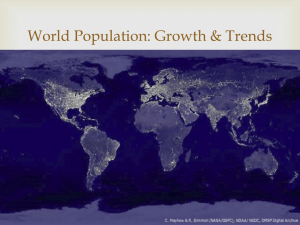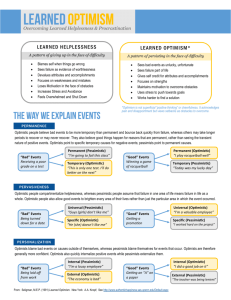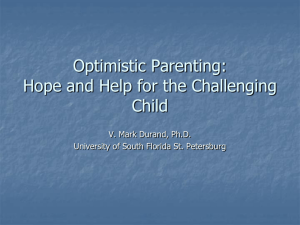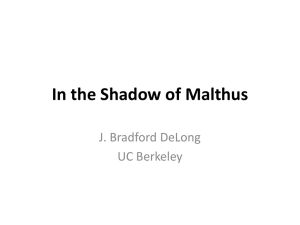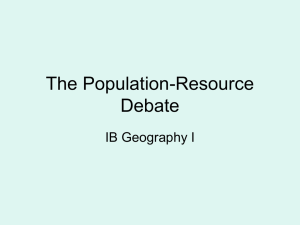Views, Population Explosion
advertisement
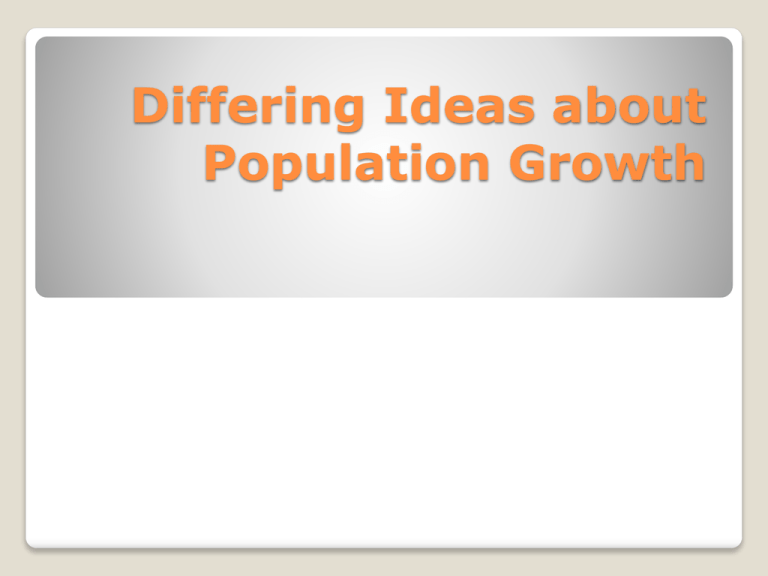
Differing Ideas about Population Growth Divergent ideas about population growth There are both optimistic and pessimistic views on population growth: 1. Cornucopian (Optimistic) 2. Bogue (Optimistic) 3. Malthus (Pessimistic) 4. Catton (Pessimistic) Optimistic Views… General agreement that large families and growing population are highly desirable Such opinions have been expressed by religious leaders because large families theoretically contribute more adherents (supporters, believers) to the faith Large number of adherents make religion both socially and politically powerful 1. Cornucopians Many people have faith in the human ability to find technological innovation that will produce increases in Earths carrying capacity ◦ People who believe this are called cornucopian’s They would point to agricultural and industrial revolution, which led to unprecedented (never done before) increase in world population Cornucopians would suggest the nature of the next revolution is IMPOSSIBLE to predict They would say that the next revolution would have to solve the most serious threats we face Ex: Cornucopian's believe that breakthroughs in energy production, like these wind turbine generators, could support a much larger population Bogue D.J Bogue described what he called the theory of demographic regulation By this, he meant that, over an extended period of time, a society naturally limits its own population The population will grow only in response to Earths ability to support it This theory appears to be supported by the demographic transition model In developed countries- Sweden-, the population has already naturally limited itself Whereas countries such as Mexico, the population is still continuing Pessimistic Views… Although most people throughout history have been optimistic about every-increasing population levels, there have been critics of this optimism ◦ Since the population levels have exploded in recent decades Pessimistic critics have basically made the same point: ◦ Earth is of finite size and has an ability to support only a certain level of population ◦ They feel ultimately, we will reach a point where the size of the population will be unsustainable because it exceeds that worlds ability to support it Malthus Anything described as Malthusian or neo Malthusian (neo means something is new, recent) is pessimistic about population growth People who share Malthus views are called neo- Malthusians He theorized that population would grow Food production cannot be increased as rapidly as population can grow ◦ in a geometric sequence (1, 2, 4, 8, 16) ◦ while food could only increase arithmetically (1, 2, 3, 4) ◦ NOT A SUSTAINABLE situation The only possible result would be the onset of “misery” which included famine, disease and warfare, all of which produce a terrible collapse of population and suffering for millions Example African nations experiencing a food crisis are a living example of Malthus theory. Globe & Mail reports: “UN call for developing countries to put more emphasis on agricultural production- less on providing food assistance in emergencies (which will not provide a sustainable solution) Catton He introduced the concept of Earths carrying capacity, which he states can be exceeded only at the expense of environmental damage ◦ Closely related to ecological footprint Catton suggests Earths population has been exceeding its carrying capacity for many years This excess has been possible because we are using up the worlds fixed stock of non renewable resources Sooner or later our economic and ecological systems must collapse When this occurs we will find the true carrying capacity has been diminished because so much of our non renewable resources is gone Example The immense population and standard of living require us to burn the oil and coal that our descendents will need. = Phantom Carrying Capacity Suzuki Test Tube http://interactive.nfb.ca/#/testtube Population Explosion The final stage of demographic transition model is know as posttransition In post- transition, a country’s birth rates equals or may even fall below its death rate Population then stabilizes or declines Countries shift into post transition as they experience the benefits of economic and social growth This growth is responsible for the completion of demographic transition in counties as varied as Canada, Sweden, Singapore ◦ But what happens if a country does not achieve the level of economic and social development that leads to post transition? Too Many People: The Demographic Trap Some experts think that some nations of the developed and developing regions may not reach post transition They fear that these developing countries may fall into a situation known as the demographic trap ◦ Situation where these countries continue to experience a high birth rate instead of the declining birth rate of the late transition stage Increasing population places great demands on the country for an increased food supply and for all kinds of services, medical, educational services If the countries birth rate continues, the population explosion will continue to happen until a Malthusian collapse becomes inevitable ◦ This collapse would occur because the population had grown to the point where it exceeded the carrying capacity for the country Overpopulation Overpopulation Each year, India’s population grows by an amount almost equal to the population on Ontario and Quebec combined This means, annually, the Indian economy must provide food, housing, healthcare, education and everything else that 10 mill more people need China is experiencing a similar situation- its population is growing annually by 7 million, an amount equal to the population of Quebec. The demands of these growing populations will exceed their countries carrying capacity ◦ This = OVERPOPULATION!

